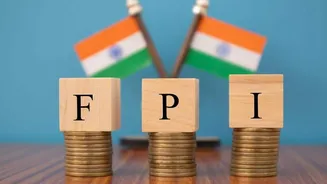Market Price Dynamics
The gold market witnessed a significant upswing, with prices escalating by Rs 1,200 per 10 grams. Several factors can influence gold prices, including
global economic conditions, geopolitical events, and currency fluctuations. Economic uncertainties often drive investors toward gold as a safe-haven asset, increasing demand and pushing prices up. Conversely, a strengthening dollar can make gold more expensive for holders of other currencies, potentially dampening demand. Market sentiment, influenced by news and expectations, plays a critical role in short-term price movements. Understanding these dynamics is essential for any investor aiming to navigate the gold market successfully. The recent surge may be attributed to a combination of these factors, suggesting a shift in market sentiment or a reaction to specific global events.
Reasons For Increase
Several factors may have contributed to the recent surge in gold prices. Rising inflation, for instance, often erodes the value of other investments, making gold an attractive hedge against inflation. Geopolitical tensions or global conflicts create economic instability, driving investors to safer assets like gold. Decreased interest rates can also boost gold prices, as they reduce the opportunity cost of holding non-yielding assets. Furthermore, shifts in currency values can influence the gold prices; a weakening rupee against the dollar, for example, makes gold more expensive for Indian buyers. An analysis of these factors and their interplay is key to understanding the sustained surge. Market analysts may suggest that the current price rise is a combination of these events coinciding to trigger a significant increase in the price of gold.
Accumulating Gold Now?
Deciding whether to accumulate gold now requires careful consideration of personal investment goals and risk tolerance. If you believe the factors driving the current price increase are sustainable, you might consider investing. Long-term investors often see gold as a hedge against economic uncertainty, providing stability in a diversified portfolio. Consider consulting with a financial advisor to create a personalized investment plan that aligns with your financial goals. Assess your risk tolerance and the portion of your portfolio you're willing to allocate to gold. Regular analysis of market trends is critical. By monitoring economic indicators, geopolitical developments, and market sentiment, investors can make better-informed decisions.
Factors To Consider
When deciding whether to invest in gold, it's important to consider several key factors. Firstly, evaluate the global economic outlook; uncertain times often favor gold. Secondly, assess geopolitical risks, which can significantly influence gold prices. Thirdly, analyze interest rate trends, as they can affect the attractiveness of gold as an investment. Also, consider the currency exchange rates; a weaker rupee can increase the cost of buying gold. Finally, diversify your portfolio appropriately by including gold along with other asset classes. Diversification helps manage risk and optimize returns. By considering all these factors, you can create a well-informed investment strategy and reduce overall risk in your portfolio. It's essential to stay informed about market movements to make the best decisions about your investments.













